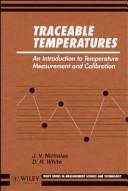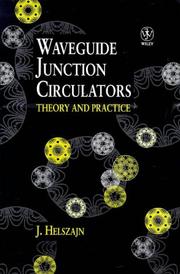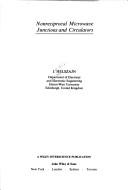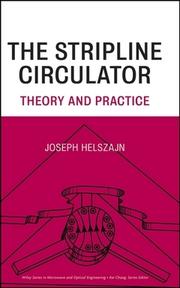| Listing 1 - 8 of 8 |
Sort by
|
Book
ISBN: 0471042927 Year: 1978 Publisher: New York (N.Y.): Wiley
Abstract | Keywords | Export | Availability | Bookmark
 Loading...
Loading...Choose an application
- Reference Manager
- EndNote
- RefWorks (Direct export to RefWorks)
Microwave circuits --- Microwave devices --- Circuits pour micro-ondes --- Dispositifs à micro-ondes --- 621.3'7 --- Electronic apparatus and appliances --- Microwaves --- Circuits, Microwave --- Electronic circuits --- Electrical engineering--?'7 --- Kortegolfcomponenten --- Kortegolfcomponenten. --- 621.3'7 Electrical engineering--?'7 --- Dispositifs à micro-ondes
Book
ISBN: 0077070925 Year: 1989 Publisher: London : McGraw-Hill,
Abstract | Keywords | Export | Availability | Bookmark
 Loading...
Loading...Choose an application
- Reference Manager
- EndNote
- RefWorks (Direct export to RefWorks)
Ferrite devices --- 621.37 --- Phase shifters --- Phase shift circuits --- Shifters, Phase --- Electronic apparatus and appliances --- Magnetic devices --- Technique of electric waves, electromagnetic waves, oscillations, pulses --- 621.37 Technique of electric waves, electromagnetic waves, oscillations, pulses

ISBN: 0471940569 Year: 1994 Publisher: Chichester Wiley
Abstract | Keywords | Export | Availability | Bookmark
 Loading...
Loading...Choose an application
- Reference Manager
- EndNote
- RefWorks (Direct export to RefWorks)
Electric filters, Passive --- Microwave circuits --- Microwave filters --- Circuits pour micro-ondes --- 621.37 --- Technique of electric waves, electromagnetic waves, oscillations, pulses --- Microwave circuits. --- Microwave filters. --- Electric filters, Passive. --- 621.37 Technique of electric waves, electromagnetic waves, oscillations, pulses
Book
ISBN: 0471369306 9780471369301 Year: 1969 Publisher: London Wiley
Abstract | Keywords | Export | Availability | Bookmark
 Loading...
Loading...Choose an application
- Reference Manager
- EndNote
- RefWorks (Direct export to RefWorks)

ISBN: 0471982520 Year: 1998 Publisher: Chichester ; New York : Wiley,
Abstract | Keywords | Export | Availability | Bookmark
 Loading...
Loading...Choose an application
- Reference Manager
- EndNote
- RefWorks (Direct export to RefWorks)

ISBN: 0471369357 Year: 1975 Publisher: New York (N.Y.): Wiley
Abstract | Keywords | Export | Availability | Bookmark
 Loading...
Loading...Choose an application
- Reference Manager
- EndNote
- RefWorks (Direct export to RefWorks)
Book
ISBN: 9781119490104 9781119490050 9781119490081 9781119490074 Year: 2019 Publisher: Hoboken, New Jersey [Piscataqay, New Jersey] John Wiley & Sons, Inc. IEEE Xplore
Abstract | Keywords | Export | Availability | Bookmark
 Loading...
Loading...Choose an application
- Reference Manager
- EndNote
- RefWorks (Direct export to RefWorks)

ISBN: 0470653035 128236541X 9786612365416 0470264209 0470264144 9780470264201 9780470258781 Year: 2008 Publisher: Hoboken, New Jersey [Piscataqay, New Jersey] J. Wiley & Sons IEEE Xplore
Abstract | Keywords | Export | Availability | Bookmark
 Loading...
Loading...Choose an application
- Reference Manager
- EndNote
- RefWorks (Direct export to RefWorks)
Stripline circulator theory and applications from the world's foremost authority The stripline junction circulator is a unique three-port non-reciprocal microwave junction used to connect a single antenna to both a transmitter and a receiver. Its operation relies on the interaction between an electron spin in a suitably magnetized insulator with an alternating radio frequency magnetic field. In its simplest form, it consists of a microwave planar gyromagnetic resonator symmetrically coupled by three transmission lines. This book explores the magnetic interaction involved in the stripline circulator's operation, the nature of the microwave resonator shape, and the network problem that arises in coupling the microwave resonator to the microwave circuit. The stripline circulator is an important device met across a wide range of industries, including wireless, military, radar, and satellite communications. The book's design tables are a unique feature, offering valuable design support. Written by an international authority on non-reciprocal microwave circuits and devices, the book is organized into logical blocks of chapters that focus on specific effects and circuit aspects of the stripline circulator. Among the highlights of coverage are: . Spatial shape demagnetizing factors of magnetic insulators. Standing wave solutions of wye gyromagnetic planar resonators. Lumped element circulators. Negative permeability tracking and semi-tracking circulators. Four-port single-junction circulators. Fabrication of very weakly and weakly magnetized microstrip circulators The final chapter explores important and continuing discrepancies between theoretical models and actual practice. For designers building circulators, isolators, and phase shifters; researchers working on the limitation of ferrite devices; and graduate students intending to work in the field, Dr. Helszajn's insights and perspectives are invaluable.
| Listing 1 - 8 of 8 |
Sort by
|

 Search
Search Feedback
Feedback About UniCat
About UniCat  Help
Help News
News